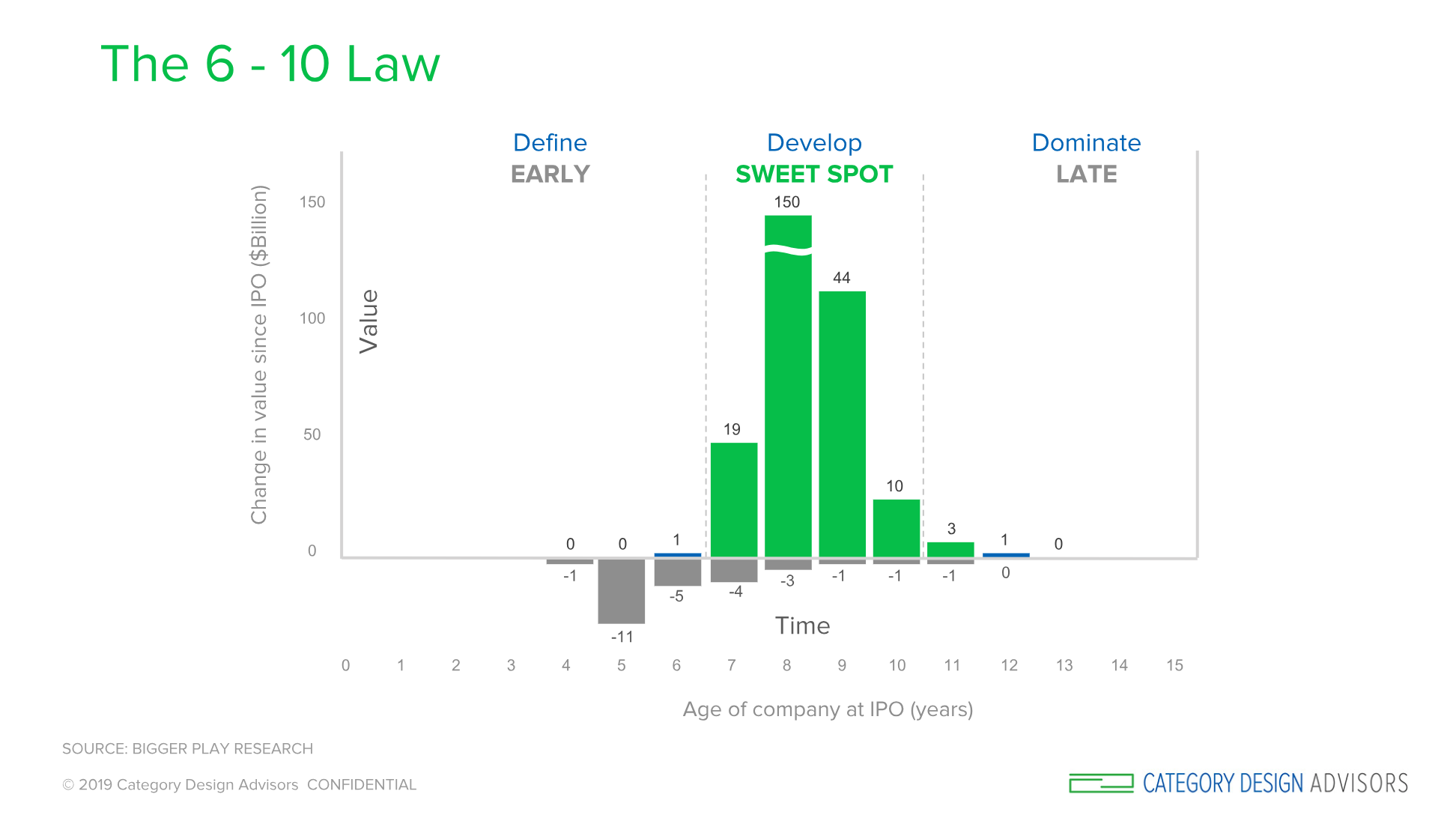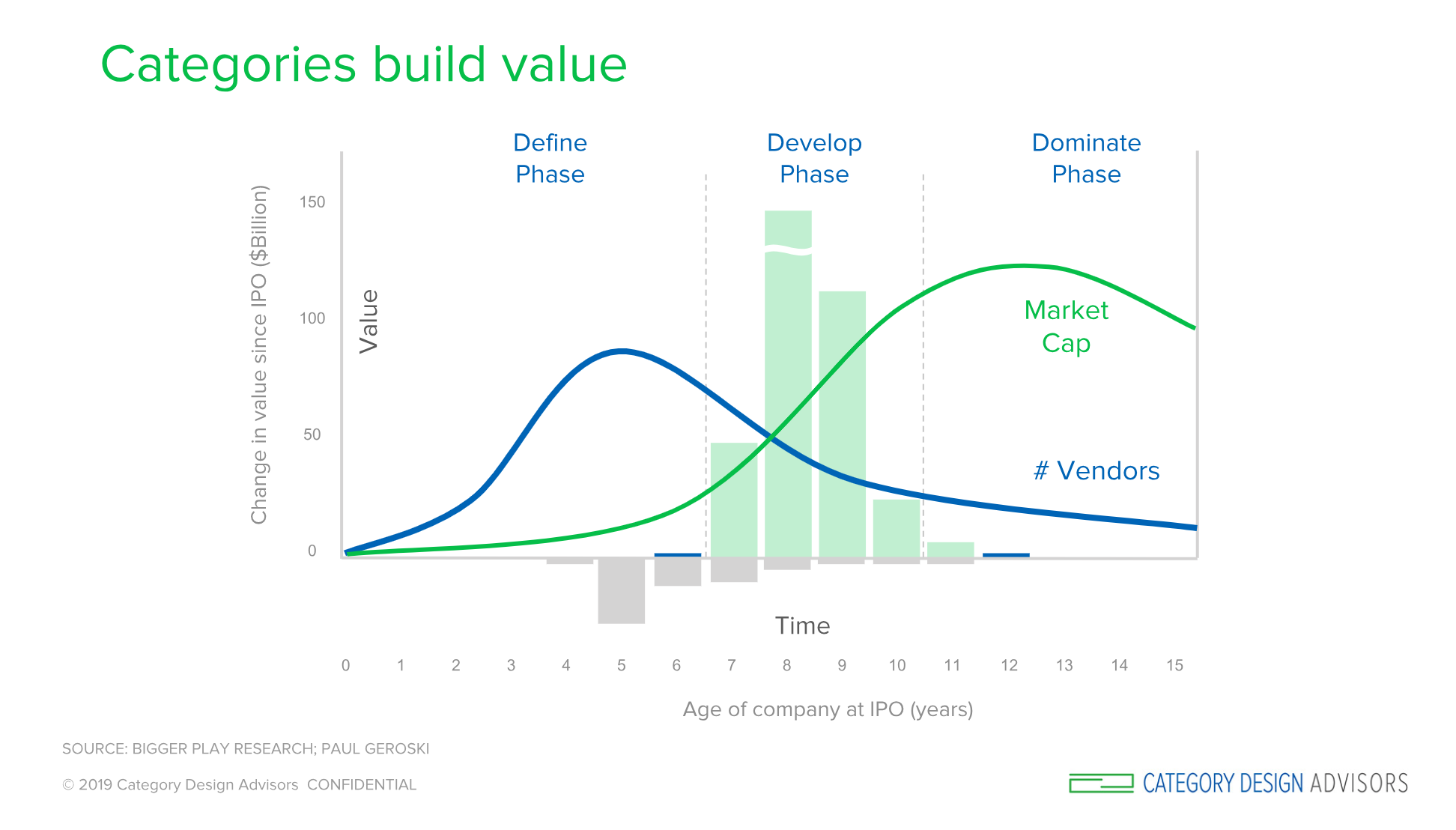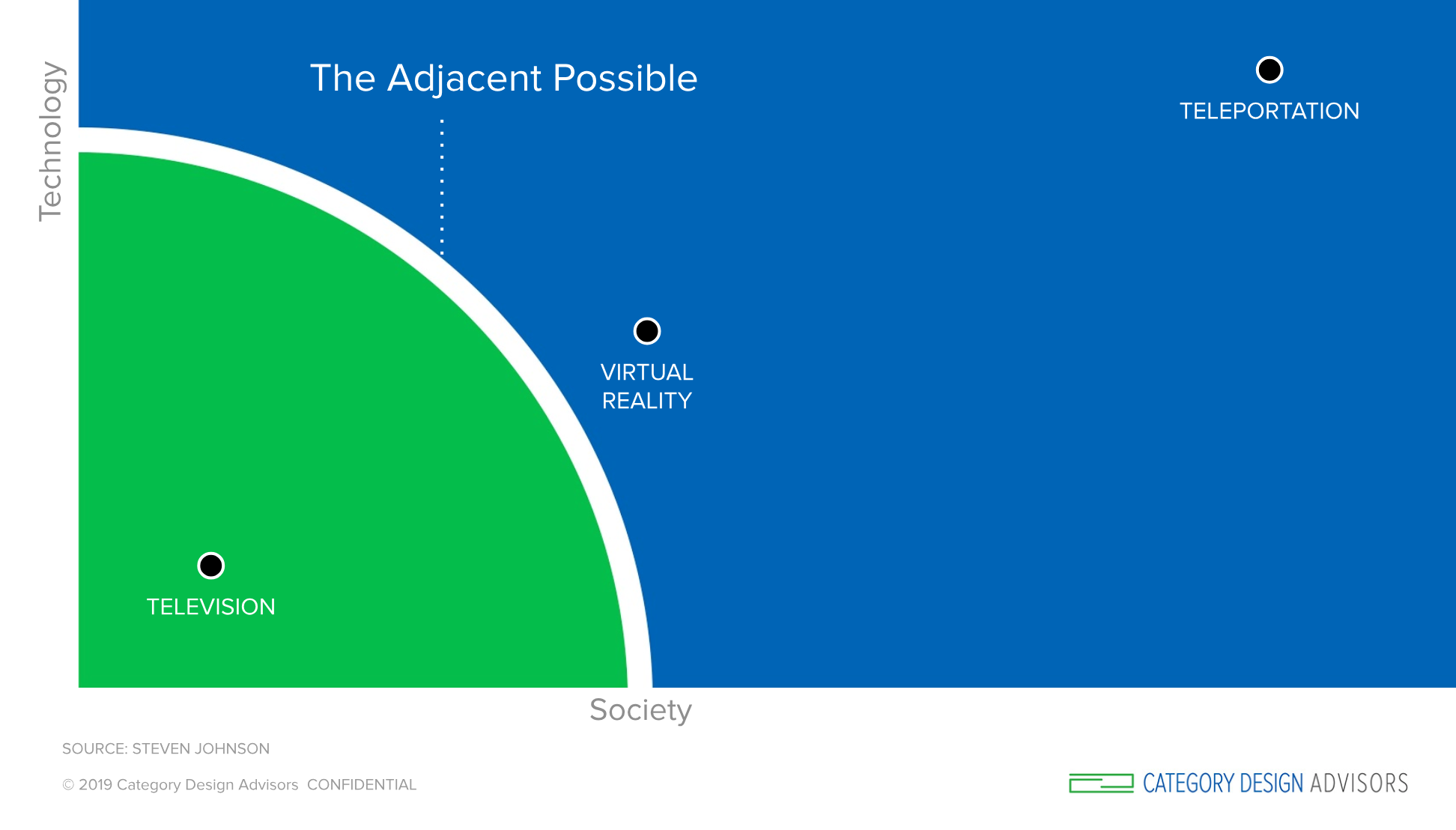Category design is the discipline of creating and monetizing new markets in a noisy world - Play Bigger
Part one of our Category Design series worksheets will help you start thinking differently about your category and introduce the components needed to dominate a market.Category Kings earn 76% of the market cap in their space - Play Bigger
REVIEW: In a multi-year research project, the Play Bigger data science team released their IPO Sweet Spot Report, where they analyzed “the impact of money and time on enduring value with these companies.”

Their findings revealed a correlation between the age of the company (6-10 years) and post-IPO valuation. They found that companies that hit the IPO Sweet Spot created 113% of the market cap post IPO. On the contrary, companies that went IPO early or late either destroyed or lost market cap value.
Another a-ha moment happened when they layered over the Category Value Curve and discovered that companies that went IPO during the “develop” phase generated the most value.
In the early stage of “Define,” a bunch of companies are starting to figure out the category, scramble to solve the problem and establish themselves as the leader. In the “Develop” phase, the Category King begins to emerge and dominate, and the market cap value increases. The last phase, “Dominate,” is where the competition falls off, companies close, and the market cap levels off.

The common thread between these successful companies was their ability to develop a new category in their space, expose a $0 billion market, and continued to put forth effort for years to be identified as a Category King.
Category Design guides product design, informs the culture and shapes the way the world sees you. - Play Bigger
Write down what “mental tags” or categories come to mind when you think of how you want customers to begin to relate to your product/service.
Category Designers also take advantage of people’s cognitive biases. For instance, the “anchoring effect” bias leads to people having a strong association with the first time they hear about something new. In this case, if you are the first company to talk about a new category it can be a key component to cement your future position as a Category King.
Write down what positive cognitive biases you want customers to have about your product/service?
Go where the Category Kings aren’t by creating a new space in the market. Finding what is missing in the market or creating your own category could equal a $0 billion market opportunity and attract investors.
DISCUSSION: Talk with your team about what is missing in the market and how can you create a new category. Write down your answers below.
Some of the world’s greatest inventions for society come from just outside of what technology could do and what society would be willing to adopt.

Author Steven Johnson of Where Good Ideas Come From, defined the space between the blue and green as the Adjacent Possible. Here is where best inventions evolve because it balances the technology available with what society would consider adopting.
DISCUSSION: Have each person on your team mark on the Adjacent Possible graph where they believe the product/service falls within the spectrum of technology to societal adoption, and explain why.
Write down any insights from this discussion.
DISCUSSION: Ask your team how these insights could change the way you approach the market, messaging to your customers and technology needs.
Write down any insights from this discussion.
The company that designs the best category is best positioned to dominate it. - Play Bigger
By creating a new category space and finding what’s missing in the market, it’ll drive the type of product and company to build. In the following case studies, review how 5-Hour ENERGY© and Airbnb found the $0 billion market and created new categories in their industry space to reach Category King status.
These next two examples are to help you start to think differently about your category and market by using Category Design strategies.
In the example of 5-Hour ENERGY©, this company found what was missing in the health energy food market - a small shot of energy to take on-the-go - and developed a new category for
|
Existing Category
|
Energy Drinks
At the time energy drinks were found in the refrigerated section, in larger quantities and gave people a boost. |
|
Problem
|
People who want an energy boost aren’t necessarily thirsty.
|
|
Solution
|
New Category - Energy Shot
Smaller energy drink in the form of a shot, non-refrigerated, provided boost of energy, shelf-stable and sold by cash register |
|
Messaging
|
“Made for hard-working people”
“It’s quick, simple, and made to help “An energy shot is an easy and effective way to feel alert at a moment’s notice” “You can keep them anywhere” Source: 5-hour ENERGY® Website |
In the example of Airbnb, the co-founders originally created this business around offering alternative places to stay for business travelers around large conferences when hotels were booked or extremely expensive. As time went on, they discovered what was missing in the hospitality market - a place you could stay when you want a different, more interesting local experience than at a cookie-cutter hotel. They ultimately recategorized their company as “community-driven hospitality,” which was viewed differently than the hotel market, and went on to build a billion-dollar company.
|
Existing Category
|
Hospitality - At the time, only hotels, resorts, etc., or long-term rentals were options for business travelers. |
|
Problem
|
Customers can’t find a hotel room, hotel rooms are ridiculously expensive, don’t want long-term rental, don’t want a bland experience. |
|
Solution
|
Community-driven hospitality / sharing economy - Short-term rentals/travel stays that offer a personal touch, you feel like a local, and for all types of travelers. |
|
Messaging
|
“Book unique homes and experiences” Source: Airbnb website |
DEFINING THE CATEGORY NAME
As you’re beginning to build out your category name, the descriptors you want to use include:
In reviewing your current category, how can you begin to think differently about your space? Where is your $0 billion
Begin to build out your category in the table below.
|
Existing Category
|
|
|
Problem
|
|
|
Solution
|
|
|
Messaging
|
© Techstars 2024 | Privacy Policy | Terms of Use